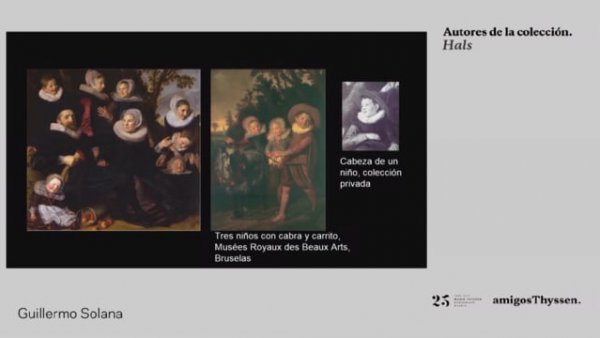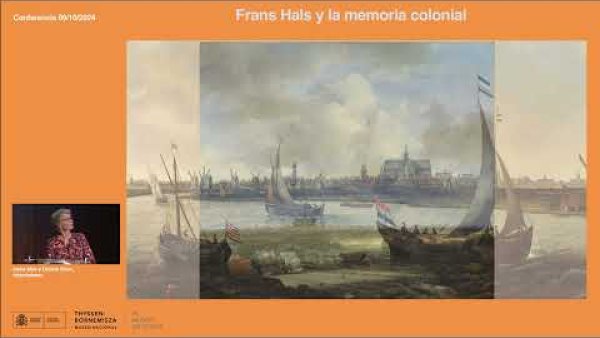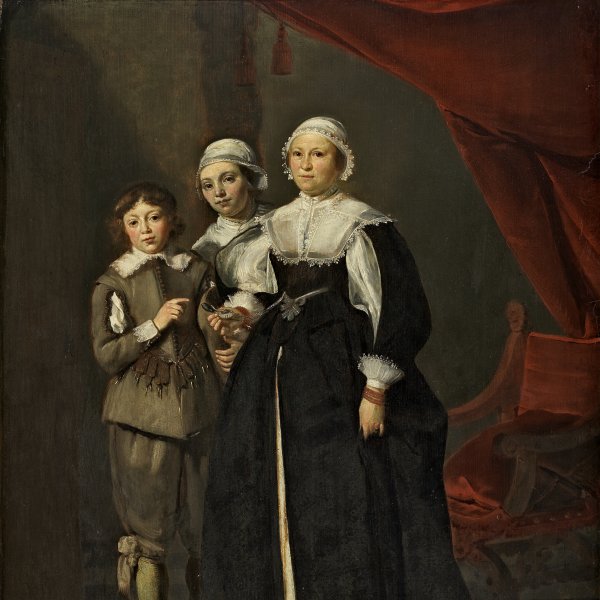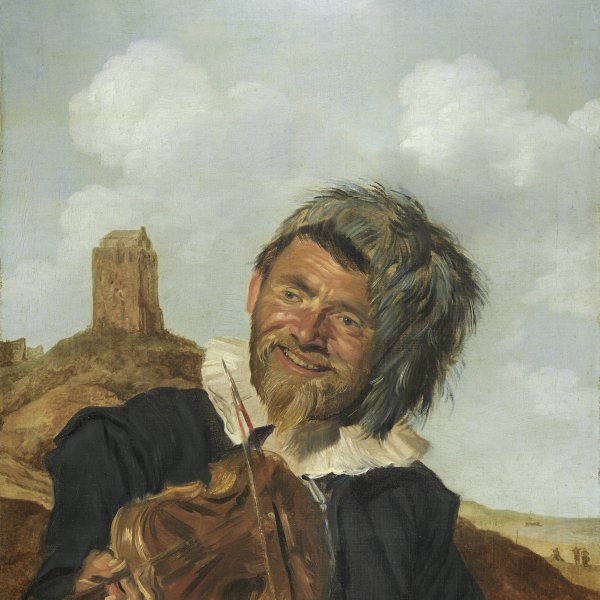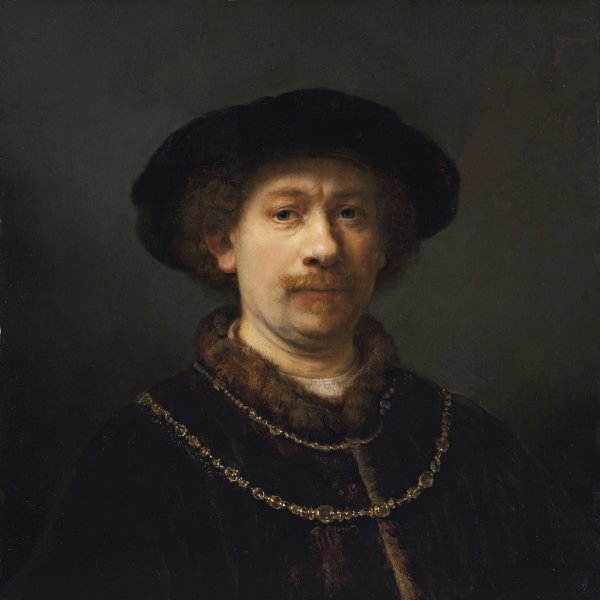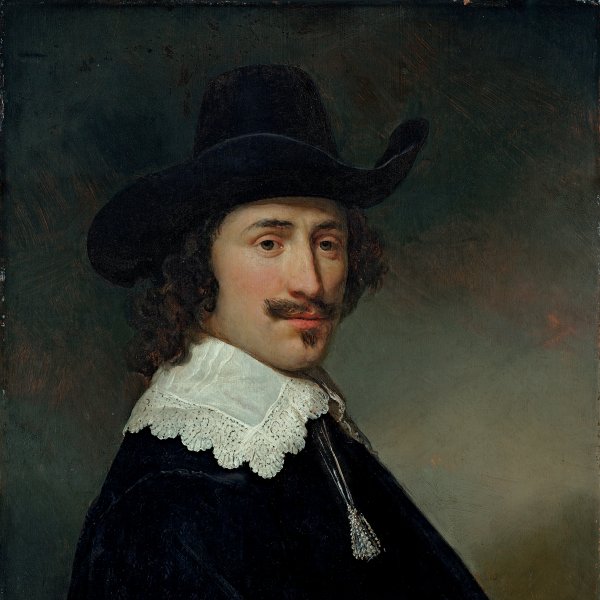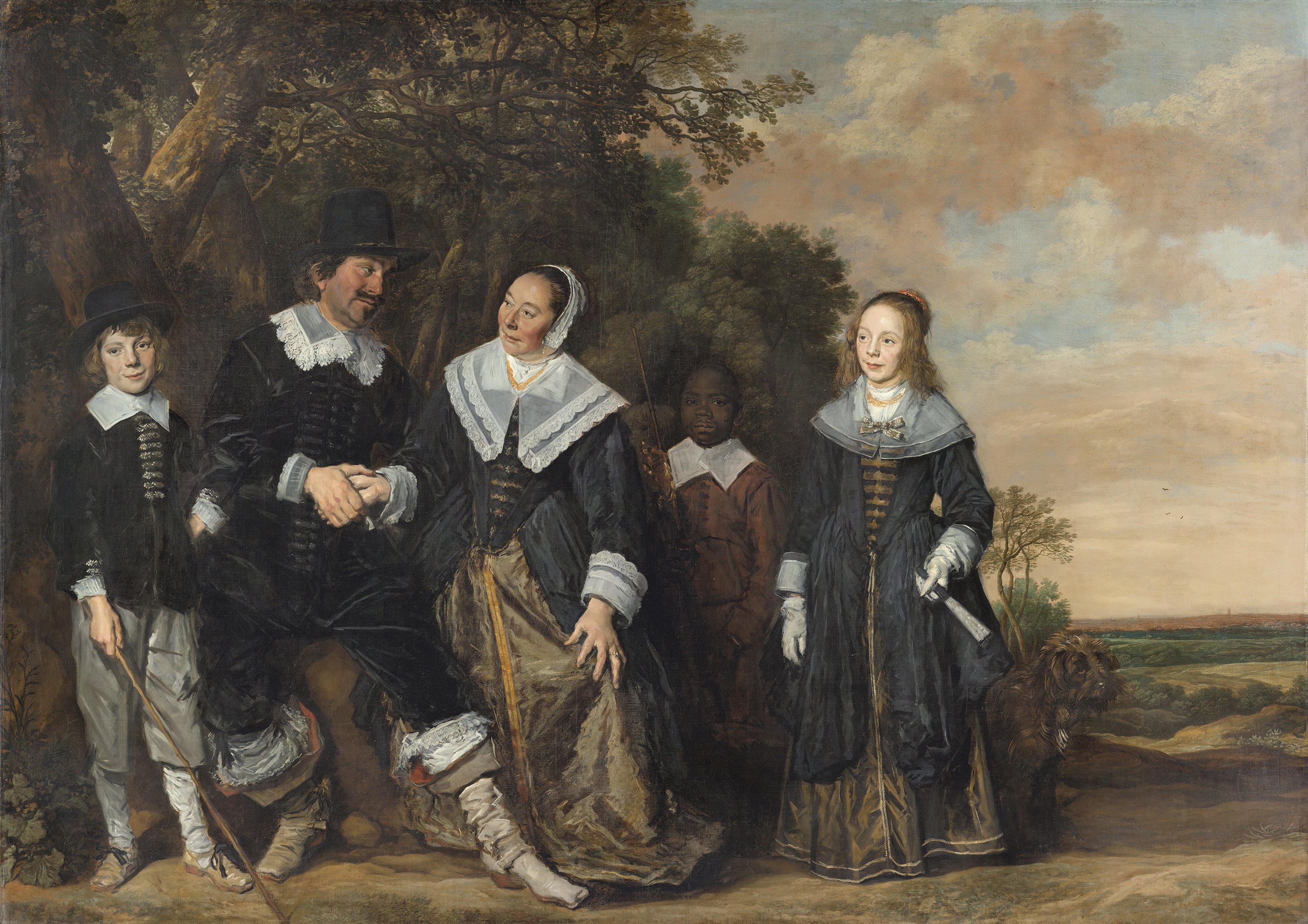Family Group in a Landscape
Frans Hals is widely considered the most brilliant exponent of Dutch portraiture, a genre that enjoyed immense popularity in the seventeenth century. At the time, Holland was a leading centre for trade and finance, and its wealthy citizens were keen for their good fortune to be immortalised through their likenesses. Hals displayed unrivalled skill in capturing the personality of his sitters, endowing them with a lively, spontaneous air not to be found in the work of earlier portrait artists. He achieved this with a broad, loose brushwork that seems very modern for the period. Hals is best remembered for his group portraits, of which this is a fine example. Here, the couple are holding hands—an allusion to faithfulness as one of the virtues of marriage—while the dog at the girl’s side symbolises loyalty.
Known in the 20th century as Frans Hals and his Family, this image falls within the category known as he group portrait. A widely used genre in Holland, the first known example by Hals is The Banquet of the Officers of the Haarlem Militia Company of Saint Georgeof 1616. This was followed by others of the same type including the Regents of the St. Elizabeth Hospital of 1641 and the two paintings of the Regents and Regentesses of the Old Men’s Home, both of 1664. Considered one of the most brilliant portrait painters of his day, Hals was unrivalled in Haarlem where he worked throughout his career. The success of his portraits lies in the fact that he was able to update a model that had become outdated through the repeated use of visual conventions. In his group and individual portraits Hals captured poses and gestures with great spontaneity, particularly the expression of the faces, conveying a sense of the most natural and immediate moment. His lively portraits communicate the individual character of each model with enormous force in works imbued with a sense of vitality and optimism.
Over the course of his career Hals produced various family groups. These include the now cut down Family Group in a Landscape of around 1620 in the Toledo Museum of Art in Ohio, although the right part with three children is in the Musées royaux des Beaux-Arts de Belgique, Brussels. Painted fifteen years later is the Family Group in the Cincinnati Art Museum, which depicts a couple with their children against a more urban background. Closer to the present canvas in size and composition is Family Group in a Landscape in the National Gallery, London.
The earliest known reference to this canvas dates back to the 18th century when it seems to have belonged to William Bristow who died in 1758. It was later recorded with the heirs of John Warde until it was acquired privately by the art dealer Joseph Duveen in 1909. In the following year it was acquired by the American banker Otto H. Kahn who paid an enormously high price for it, a fact commented on in the British press at the time. In 1935 it was in the Mogmar Art Foundation in New York, at which point it was acquired for the Thyssen-Bornemisza collection via the Mercuria gallery in Lucerne.
The fact that the couple depicted here are holding hands and looking at each other with great affection has led to the suggestion that the painting contains a reference to loyalty as one of the virtues of marriage. This idea is based on one of Alciati’s emblems on marriage — number cxc, On the fidelity of Spouses — in which the man and wife link their right hands in a sign of faith and confidence in a way similar to the present painting. The dog, which in Alciati’s emblem is located below the couple, here appears next to the daughter and is a symbol of fidelity. In the emblem, the love that should exist between the couple is represented by an apple, which is not present in Hals’ painting. Alciati comments on the apple: “This is the image of fidelity. If it is fed by Venus’ fire, it is recommended that a branch of apples appears on the left, as they are Venus’ fruit: Atalanta used them to defeat Hippomenes and Galatea to pursue her beloved”. Slive drew attention to the relationship between Alciati’s emblem and the present painting. He also suggested that Pieter de Molijn executed the extensive landscape on the right as he noted differences between the style of the figures and that of the large open landscape with sky.
Hals constructed the figures with a bold, fluid brushstroke that carefully conveys their attitudes and poses. The faces are painted using a more precise, smooth brushstroke, emphasised with black lines in the eyes, noses and cheekbones that add greater expressivity. The depiction of the clothes and the marvellous rendering of the husband’s boots, all painted with long, loose brushstrokes that convey the textures of the different materials in a range of greys and ochres, are characteristic of Hals’ finest manner.
Mar Borobia
Emotions through art
This artwork is part of a study we conducted to analyze people's emotional responses when observing 125 pieces from the museum.

